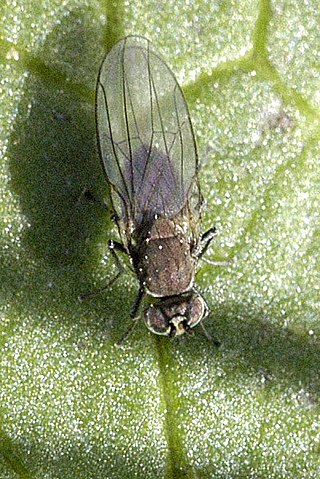
A honey bee is a eusocial flying insect within the genus Apis of the bee clade, all native to Afro-Eurasia. After bees spread naturally throughout Africa and Eurasia, humans became responsible for the current cosmopolitan distribution of honey bees, introducing multiple subspecies into South America, North America, and Australia.

Hornets are the largest of the eusocial wasps, and are similar in appearance to their close relatives yellowjackets. Some species can reach up to 5.5 cm (2.2 in) in length. They are distinguished from other vespine wasps by the relatively large top margin of the head. Worldwide, 22 species of Vespa are recognized. Most species only occur in the tropics of Asia, though the European hornet, is widely distributed throughout Europe, Russia, North America, and north-eastern Asia. Wasps native to North America in the genus Dolichovespula are commonly referred to as hornets, but are actually yellowjackets.

The European bee-eater is a near passerine bird in the bee-eater family, Meropidae. It breeds in southern and central Europe, northern and southern Africa, and western Asia. Except for the resident southern African population, the species is strongly migratory, wintering in tropical Africa. This species occurs as a spring overshoot north of its usual range, with occasional breeding in northern Europe.

Yellowjacket or yellow jacket is the common name in North America for predatory social wasps of the genera Vespula and Dolichovespula. Members of these genera are known simply as "wasps" in other English-speaking countries. Most of these are black and yellow like the eastern yellowjacket Vespula maculifrons and the aerial yellowjacket Dolichovespula arenaria; some are black and white like the bald-faced hornet, Dolichovespula maculata. Others may have the abdomen background color red instead of black. They can be identified by their distinctive markings, their occurrence only in colonies, and a characteristic, rapid, side-to-side flight pattern prior to landing. All females are capable of stinging. Yellowjackets are important predators of pest insects.

The alpine swift formerly Apus melba, is a species of swift found in Africa, southern Europe and Asia. They breed in mountains from southern Europe to the Himalaya. Like common swifts, they are migratory; the southern European population winters further south in southern Africa. They have very short legs which are used for clinging to vertical surfaces. Like most swifts, they never settle voluntarily on the ground, spending most of their lives in the air living on the insects they catch in their beaks.

Entomophagy in humans or human entomophagy describes the consumption of insects (entomophagy) by humans in a cultural and biological context. The scientific term used in anthropology, cultural studies, biology and medicine is anthropo-entomophagy. Anthropo-entomophagy does not include the eating of arthropods other than insects such as arachnids and myriapods, which is defined as arachnophagy.

Ephydridae is a family of insects in the order Diptera.

Pierre-Justin-Marie Macquart was a French entomologist specialising in the study of Diptera. He worked on world species as well as European and described many new species.

The Machilidae are a family of insects belonging to the order Archaeognatha. There are around 250 described species worldwide. These insects are wingless, elongated and more or less cylindrical with a distinctive humped thorax and covered with tiny, close-fitting scales. The colour is usually grey or brown, sometimes intricately patterned. There are three "tails" at the rear of the abdomen: two cerci and a long central epiproct. They have large compound eyes, often meeting at a central point. They resemble the silverfish and the firebrat, which are from a different order, Zygentoma.
Michael Chinery is an English naturalist.

The western honey bee or European honey bee is the most common of the 7–12 species of honey bees worldwide. The genus name Apis is Latin for "bee", and mellifera is the Latin for "honey-bearing" or "honey carrying", referring to the species' production of honey.

Coccinellidae is a widespread family of small beetles ranging in size from 0.8 to 18 mm (0.03–0.7 in). They are commonly known as ladybugs in North America and ladybirds in Great Britain. Some entomologists prefer the names ladybird beetles or lady beetles as they are not true bugs. Many of the species have conspicuous aposematic colours and patterns, such as red with black spots, that warn potential predators that they are distasteful.

Insects as food or edible insects are insect species used for human consumption. More than 2,000 insects species worldwide are considered edible. However, a much smaller number is discussed for industrialized mass production and partly regionally authorized for use in food. Common forms of consumption are whole insects on the one hand, and pulverized insects that are used as an ingredient in dishes or in processed food products such as burger patties, pasta, or snacks, on the other hand.

Acanthocnemus nigricans is a species of cleroid beetle, the only species in the genus Acanthocnemus and the family Acanthocnemidae. Originally native to Australia, the species has spread in modern times to numerous parts of the world, including Europe, Africa, India and Southeast Asia. The insects are pyrophilous, congregating around areas of recently burned wood, being attracted to chemicals found in wood smoke. They have specialised infrared receptors located on the thorax close to the head, used to detect heat. Their life cycle is poorly understood, though mating and egg-laying likely occurs within ash. The larvae are possibly saprophagous.
Dilta chateri is a species of jumping bristletail in the family Machilidae.
Dilta geresiana is a species of jumping bristletail in the family Machilidae.

Dilta hibernica is a species of jumping bristletail in the family Machilidae. It is found in Europe.
Dilta lundbladi is a species of jumping bristletail in the family Machilidae. It is found in Europe.
Dilta saxicola is a species of jumping bristletail in the family Machilidae. It is found in Europe.

Entomophagy is the practice of eating insects. An alternative term is insectivory. Terms for organisms that practice entomophagy are entomophage and insectivore.















